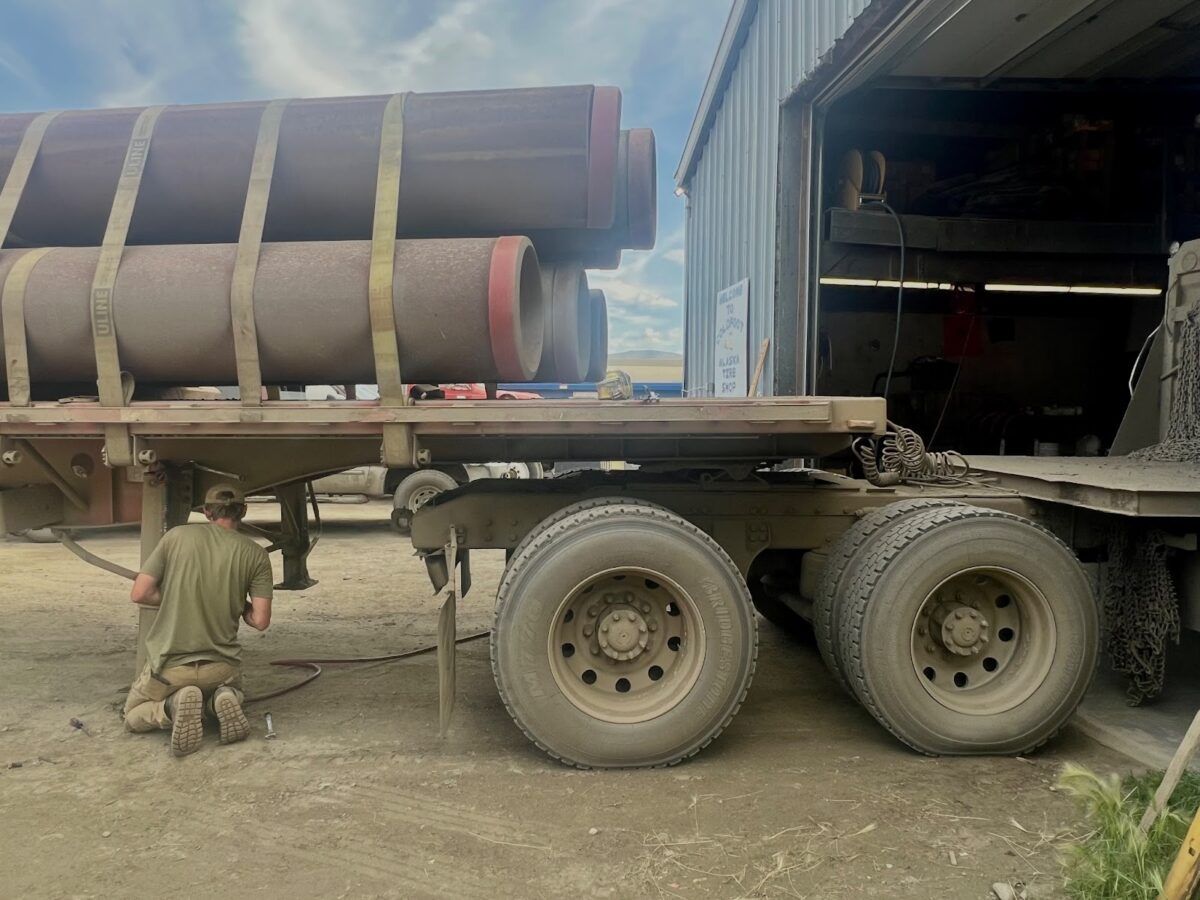🎣 Warrants Served
Plus, a Chicago-based freight broker boasts about making $215k in one day, Lineage Logistics hits it big with an $18 billion IPO, the latest on the Ocean's 11-style freight heist, and more.
Explore the highs & lows of trucking in Alaska's Arctic Ocean. A world of ice road truckers, unique challenges, and stunning landscapes.

Writing for FreightWaves, Rachel Premack journeyed to Alaska's Arctic Ocean to investigate the boom in Alaskan trucking amid the U.S. freight recession. She recounts her adventure alongside drivers Kyle Monnier and Richard "Mustang" Mustain.
Who drives in this region?
When is trucking business good?
What do drivers haul?
How much do drivers make?
Alaska presents unique driving challenges due to its extended hours-of-service (HOS) laws, unpredictable conditions, and sparse population.
Alaskan Hours-of-Service (HOS) Laws:
Unpredictability: Dirt roads can damage equipment, and mechanic help may be distant.
Population: A sparse population leads to longer and lonelier routes.
Driving the Dalton Highway demands understanding its unique challenges, knowing essential safety practices, and being prepared for the unpredictable.
Route Details:
Vehicle Considerations:
Safety Practices:

Daunting challenges, from intense seasonal changes to the risks on the Dalton Highway, accompany the Arctic region's beauty.
Environmental Factors:
Safety and Maintenance:
Read more about Rachel's Alaskan trip on FreightWaves to get the full picture of truckers who brave the icy roads and unforgiving Arctic Circle.
❄️🚨 Alaskan trucking fleets are about to enter a hiring spree for literal ice road truckers — paying them as much as $170,000 a year
— Rachel Premack (@rrpre) September 5, 2023
This summer, I went to Alaska to find out what the job is really like
Here's my tale https://t.co/TYfxnm3jSp
Join over 10K+ subscribers to get the latest freight news and entertainment directly in your inbox for free. Subscribe now & be sure to check your inbox to confirm (and your spam folder just in case).